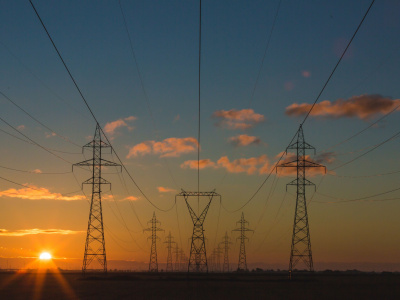
Enhancing European financing for adaptation to cascading climate risks: Three key takeaways

Authors
Daniel Adeniyi argues that climate adaptation finance should be a top priority at COP28 in light of the persisting and growing gap, which is projected to be five to ten times greater than current levels. He gives three takeaways based on a recent event on how to enhance European financing for adaptation to cascading climate risk.
The climate adaptation needs of developing countries are huge and growing. Yet, the gap in adaptation finance for these countries is projected to be five to ten times greater than current levels of international adaptation finance flows, and this disparity is only increasing over time. Climate adaptation finance should be a top priority at COP28.
There are still considerable gaps in assessing climate risk and adopting comprehensive strategies and coordinating actions among financial institutions which impede both the feasibility of and capital allocation towards adaptation projects. If we delay action on these assessments and on scaling up complementarities and synergies between development and climate finance actors, we will fail to close the adaptation finance gap.
Late September, ECDPM organised an event on enhancing European financing for adaptation to cascading climate risks in the framework of the CASCADES programme, bringing together experts from the development and climate finance sectors to discuss how they could best step up their efforts on climate adaptation. We discussed the need to integrate climate risk assessments within financial institutions, and for systemic and operational adjustments within the European development financing architecture to strengthen adaptation support and work with a wide range of stakeholders from the public and private sectors. These are my three key takeaways from the discussion.
Most financial institutions either appear to have difficulty estimating the specific costs of climate change risks or give inadequate attention to the assessment and integration of climate risks in their strategic planning and day-to-day operations.
Assessing climate physical risks is essential for adaptation finance
To effectively address the climate change challenge in developing countries, we need climate risk assessments to identify the requirements to support adaptation efforts and for devising appropriate policy responses, including those related to finance. However, most financial institutions either appear to have difficulty estimating the specific costs of climate change risks or give inadequate attention to the assessment and integration of climate risks in their strategic planning and day-to-day operations.
The underlying contention is that without the fundamental components, data and methodologies necessary for conducting a climate risk assessment, allocating capital becomes exceedingly difficult. Climate risk assessments often face challenges from incomplete and non-uniform data, a dearth of information regarding asset ownership chains and the mispricing of physical risks within financial markets. This hinders the ability to discern climate-related events, formulate appropriate policy responses and identify the required financial resources and instruments.
To respond to these challenges, a team of CASCADES researchers developed a science-based methodology for assessing physical risks at the asset level, including the potential for loss cascades, as well as risks associated with securities and financial portfolios.
This assessment and methodology can enable policymakers, investors and insurance companies gain a comprehensive understanding of where risks are concentrated, empowering them to make well-informed decisions. Nevertheless, combining climate risk data with financial and economic data, essential for informed decision-making, presents a substantial and complex challenge that forms barriers for uptake.
Coordination and cooperation hold the key to improved adaptation financing
Despite the crucial role played by adaptation finance, European development banks and development finance institutes (DFIs) have not yet mounted a sufficiently coordinated and comprehensive response in this area, despite their promises and new policies to support climate adaptation.
Among the many challenges associated with advancing adaptation finance for DFIs and multilateral development banks (MDBs), three stood out from our discussion. Firstly, adaptation finance targets are either set at insufficient levels, lack clarity or are altogether absent. Secondly, there is a pronounced challenge concerning limited collaboration, both within Europe and beyond, regarding the various mechanisms of adaptation finance. Lastly, a significant issue revolves around the elevated risks associated with and the feasibility of adaptation projects, rendering them often difficult to bankroll.
Participants raised concerns related to the weak international and local governance of climate adaptation policies, the lack of quality data and reliable assessment, the insufficient range of funding instruments, including grants, and the business model of many DFIs, traditionally inclined towards deal-making rather than actively cultivating transformative partnerships.
There is a clear need to improve coherence within and among DFIs, between DFIs and other actors, including at the international and local levels, as well as the DFIs' capacity for partnership-building, enabling them to collaborate more effectively and work together towards shared objectives. In particular, stronger cooperation between DFIs and donors (and their implementing agencies) on climate adaptation is needed. In this respect, DFIs can become a more effective bridge to mobilise climate adaptation finance.
There might be a need to also set clear financing targets with clear timelines to meet the targets while adopting transparent reporting. DFIs could also adopt explicit strategies to more systematically mainstream climate adaptation and resilience in their activities. Donors must take proactive steps to further embed climate change resilience into their overarching and sector-specific programming. This will, in turn, encourage implementing agencies to adopt a more integrated, cross-cutting approach to address this critical issue.
The private sector could play a pivotal role in supporting adaptation in developing countries, contributing significantly to climate-resilient investments. Identifying and harnessing similar opportunities for private sector engagement in developing countries will be critical to complement much-needed public investments in climate adaptation and resilience.
Adaptation financing involves a complex interplay of priorities, policies, resource allocation and power.
Financing adaptation to climate change is a political matter
Adaptation financing involves a complex interplay of priorities, policies, resource allocation and power. The mechanism for financing adaptation is often a source of political contention. Adaptation finance is insufficient partly because loans are mainly the preferred instrument. Concessional finance and grant funding for adaptation projects are valuable in the early stages of project development, such as feasibility studies, and provide an opportunity to crowd in private investments through blended financing. These instruments offer the potential to enhance the bankability of adaptation projects, but they remain inadequate.

The Green Climate Fund (GCF), which is potentially an important source of funding for adaptation projects, needs to take more steps to increase the availability of grant funding significantly. While a replenishment of the GCF would be badly needed, as discussed earlier, the mechanism and management of GCF should also be adjusted to become more effective and deliverable at scale, thereby addressing some legitimate funders’ concerns.
In the absence of strong political leadership on climate adaptation, including from the Global North, financing adaptation, including from MDBs, is likely to remain limited, and financing for adaptation will continue to fall short of the needed levels.
Looking forward
All in all, climate risk assessment, increased mobilisation of adaptation finance by public development banks and DFIs, and greater cooperation among financial institutions are pivotal to build system-wide adaptation. The upcoming COP28 presents a valuable opportunity for the European Union, its financial institutions and its partners to showcase their commitment and capability.
The views are those of the author and not necessarily those of ECDPM.



